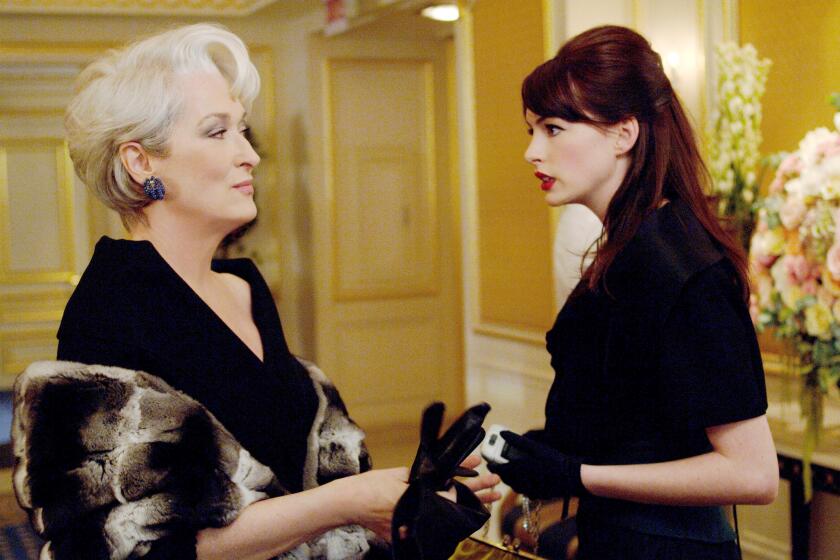Indies and Cable Fight Over Turf
- Share via
“Someday, the industry could simply be a handful of powerful stations, beaming ‘The Cosby Show’ to everybody.”
That dire prediction comes from Preston R. Padden, president of the Assn. of Independent Television Stations. Padden, in Los Angeles this week for the organization’s annual convention at the Century Plaza, was summing up his side of the debate over whether the independents need government help in protecting their turf from cable television.
Padden and most of the independent station representatives gathered at the convention say yes--not just in the interest of the independent station owners, but for the sake of the TV viewer at home as well.
The issue involves syndicated programming, the lifeblood of most independent TV stations. Prior to 1980, when a broadcast station purchased the rights to syndicated shows such as “Donahue,” “Small Wonder,” reruns of “Cheers” or packages of old movies, it was getting the exclusive rights to broadcast them in its market.
But in 1980, the regulation was repealed. Currently, cable systems can bring that same programming into the market--at a fraction of what it costs the independent--via satellite from the so-called superstations: WTBS in Atlanta, WGN in Chicago and WOR in New York.
The FCC has initiated an inquiry into the matter; stations hope they will eventually rule in favor of reinstating the exclusivity rule.
They got some encouragement Thursday from Dennis R. Patrick, chairman of the Federal Communications Commission. In a speech to the INTV convention, which concludes Saturday, he said that while he couldn’t make a final judgment on the issue, he clearly understood the station operators’ point of view.
“One obvious change you should want--and Preston tells me you do--is elimination of the current restrictions on broadcasters’ ability to purchase effective exclusivity for syndicated product,” Patrick said. “From your perspective, a world in which cable can refuse to carry your signal, while at the same time enjoying a right to carry any signal it pleases, is, quite simply, intolerable.”
If they are not given such protection, the independents say, this may be the result: lower revenue for the stations, resulting in a reduced ability to compete for quality programming, resulting in the slow death of the independent stations.
“What could happen is that the viewer could lose everything that they (the local stations) contribute to the industry,” Padden said, citing local news broadcasts, locally produced programming and public-service programming as offerings that would be sacrificed as revenues declined.
The Los Angeles market is a unique one with four strong independent stations: KTLA Channel 5, KHJ Channel 9, Fox Television’s KTTV Channel 11 and KCOP Channel 13. According to convention reports, Los Angeles independent stations routinely snare half of the prime-time audience. Still, Derk Zimmerman, president of Fox Television’s seven independent stations, said Los Angeles stations face the same threat as others nationwide.
“The problem is the same: The product is expensive, the stations bargain for it, and then exclusivity is diminished,” he said. “Frankly, I don’t get it. I don’t understand why somebody can take a signal that’s sold (to WGN) for the Chicago market and bring it into Houston.”
Gary Brandt, general manager of KLJB-TV in Davenport, La., said his station refuses to buy any property that also comes into his market via cable, and said that eventually, if the cable superstations gobble up the best syndicated fare, the only way the viewer will be able to get those programs is if he or she is willing to pay cable’s price.
Despite the fear generated by cable, however, Padden stressed in his remarks to the convention that he thinks today’s independent stations are healthier than ever--even though an estimated 23 of about 240 general-purpose independents have gone into bankruptcy within the past 18 months. He said that recent ratings show that independent stations pose a greater threat to the networks than cable or the videocassette.
“The independents have taken the audience away,” he said proudly. He charged in a separate interview that the news media had ignored the significant network audience erosion caused by independent stations to report the “easy story” of cable’s effect on network viewing. “It’s a classic case of looking at the hole rather than the doughnut,” he said.
“For certain, the cable networks have attracted some increased viewership and it would be a mistake for us to denigrate their potential,” he added in his speech. “However, the hard number reported by the ratings services demonstrate that you--the independents--are the real superstations in this business.”
page 1 caption
More to Read
The biggest entertainment stories
Get our big stories about Hollywood, film, television, music, arts, culture and more right in your inbox as soon as they publish.
You may occasionally receive promotional content from the Los Angeles Times.










